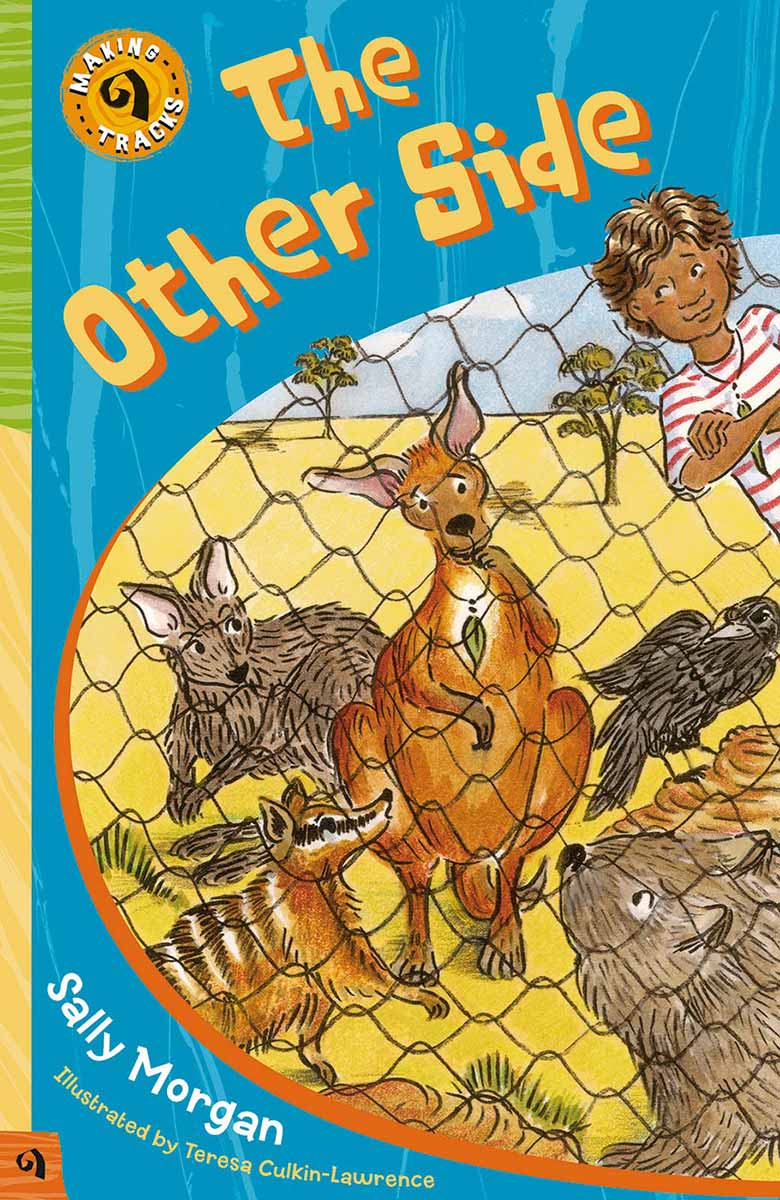Synopsis

Nine-year-old Alex is not impressed about the prospect of spending a few days with his grandfather. Gramps and his friends are environmental activists and when Alex and his parents arrive, Gramps is tied to a tree – with a large crowd and a television reporter in attendance. It is not the first time Alex has been embarrassed by Gramps.
Not deterred by Alex’s silence, Gramps gives him chocolate cake and a gumleaf to wear around his neck, so that he will always have a piece of the bush with him. He also shows Alex a piece of wood and wire which he claims is part of the rabbit-proof fence. Gramps comments that the invading rabbits had much in common with some developers today, as both ruin the land.
Homesick and tired, Alex falls asleep with the gumleaf still around his neck. But when he ‘wakes’ he is out in the scrub, and discovers to his horror that he has huge feet, paws and a tail. Alex befriends a group of native animals and learns of their fears about a large group of scary rabbits who are coming to take over their land. He calls on the animals to help him get home, but first they need to devise a way for him to get over the fence that has been built to keep the rabbits out.
Using the skills of each member of the group, Alex finds his way back home and helps the native animals to face their fears. On his return, he has a new appreciation for the way Gramps and his friends work together to save the bush.
Discussion questions
- Why do you think that Alex was embarrassed about Gramps? Why is he scared that he will be filmed by a news crew?
- Gramps showed Alex the wire and wood from the rabbit-proof fence because he believed that some developers are like the rabbits. Why do you think that Gramps believes this?
- At the end of chapter 3 when wallaby, numbat, crow and wombat are talking excitedly, Alex is reminded of Gramps’ friends. Can you explain why?
- Do you think that building the rabbit-proof fence was an effective way of attempting to stop rabbits moving across Australia?
- How does Alex’s attitude to Gramps change during the story? Why do you think this happens?
- What was the main thing that Alex learnt from his ‘dream’?
Classroom activities
- Ask your students to imagine that they are the television reporter sent to cover the confrontation between the Eagles and the developer. They should write up the report that they will present on the television news. They may wish to include quotes from interviews with Gramps and the developer.
- Discuss the qualities of Dreaming stories with your students, highlighting their effectiveness as a way of passing knowledge from one generation to the next, and the use of animals in these stories. Invite students to select an environmental message that they think is important, and to create a Dreaming story that conveys this message.
- Provide each student with a copy of the Something familiar? worksheet (PDF 3.1mb). This worksheet challenges students to identify similarities between members of the Eagles and the native animals Alex meets in his dream.
- What are the environmental concerns shared by people in your neighbourhood? Ask students to work in small groups and conduct research to identify any groups that are working to solve problems relating to the environment in your community. What are their problems and concerns? What tactics are they using to highlight their concerns? Has there been any press coverage of these issues? Have they had any success? Groups should present their findings as a short written report.
- The Other Side is inspired by the rabbit-proof fence, which was an attempt to contain the spread of an introduced species. Use the Introduced species worksheet (PDF 2.6mb) to guide students to research other species that have been introduced into Australia. Give each small group of students one of the pieces of the jigsaw and ask them to include maps and images when they report on their research.
Book details
The Other Side by Sally Morgan
illustrated by Teresa Culkin-Lawrence
ISBN 978 1876944 56 8
198mm x 130mm, 64pp
black and white illustrations
Published 2007. This book is out of print.
- Download Something familiar3.1 mb pdf [ PDF | 3.1 mb ]
- Download Introduced species2.6 mb pdf [ PDF | 2.6 mb ]